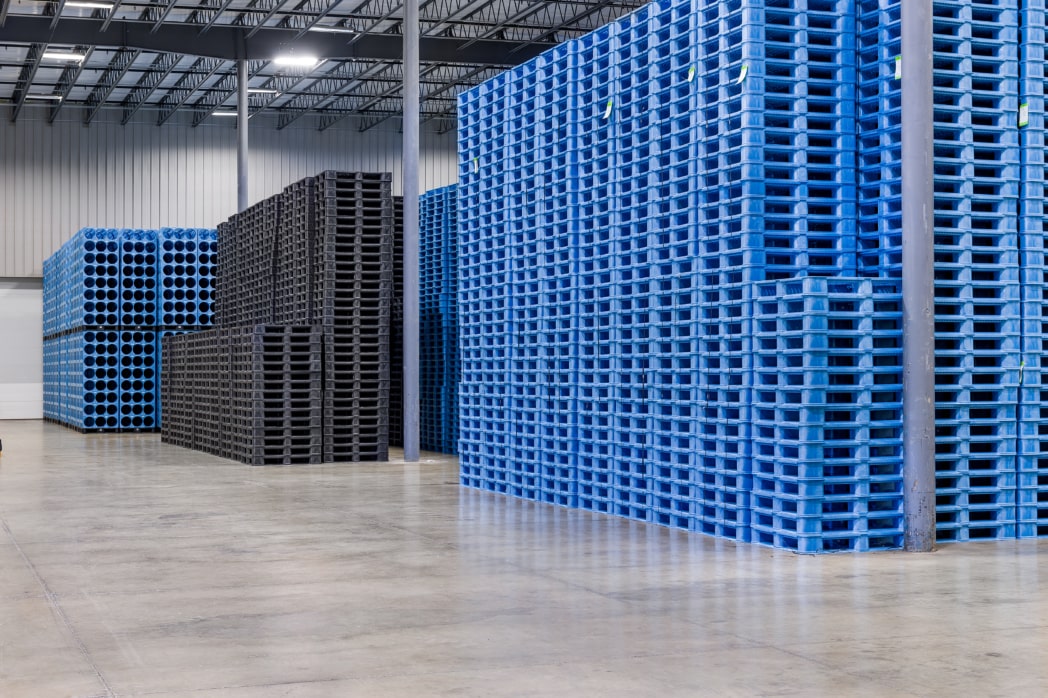RFID pallets are a state-of-the-art and highly efficient method for warehouse pallet tracking that can significantly streamline your logistics if implemented properly. RFID, or Radio Frequency Identification, in the form of RFID plastic pallets, is a way to clearly identify your pallets and cargo and their location along the supply chain and expedite the transfer and receipt of goods.
How Does RFID Pallet Tracking Work?
Currently, you may use bar codes or labels on your pallets in order to track your inventory or shipments, but RFID pallet tracking technology is far more efficient. Bar codes and labels can be tricky to read and do not store a tremendous amount of data. You may have long stretches where you do not know exactly where your pallet is, since opportunities to scan the bar code or record the label information may be limited. RFID changes these limits drastically.
The RFID transponder can store a far greater amount of information than a bar code and allows you to access that information — and information about multiple pallets — at any time. It should be easy to see how quickly such a method of tagging and categorization can streamline your workflow and pallet tracking process.
Browse Our Plastic Pallet Selection
What Else Do I Need to Know About RFID Pallets?
How do RFID tags work and how do you use them? You simply attach the transponder, or tag, to the pallet and upload information to a database about the shipment. The RFID tag may be active or passive. If it is active, it will always generate its own battery-powered radio signal. If it is passive, the RFID pallet tracking tag activates in response to radio waves projected onto it, using those waves to generate a magnetic field to power itself.
Your pallets become instantly identifiable and you can track inspections, movements and receipt of goods clearly and in real-time anywhere along the supply chain, avoiding logistical confusion and minimizing the chance of pallet loss.
When affixing your RFID tags to your pallets, be sure to place them somewhere that is easy to find and protected from possible rough handling of the pallet. Avoid seams and spots near the bottom of the pallet or covering the shipping label. Make sure that each RFID tag has a unique shipping number so you can identify that specific pallet.
How Can I Learn More About RFID Plastic Pallets?
If you’d like to learn more about RFID pallet tracking technology and its use in plastic pallet packaging, contact Polymer Solutions International Inc. We are a leader in bottled water racks and reusable plastic packaging, designing innovative packaging solutions for a wide variety of industries — including pharmaceutical, food and beverage and retail — in over 105 countries.
Our solutions can help you reduce costs, protect your products from damage and contamination and improve your supply chain. For further information about our products or about RFID pallet tracking, visit our website and talk to us on our Live Chat, call us at 610-325-7500 or contact us online today.



